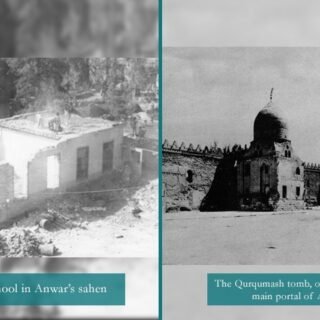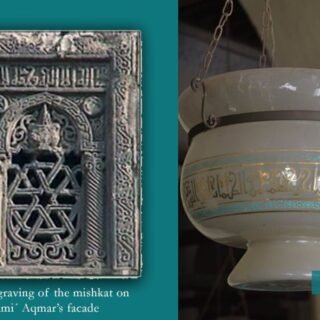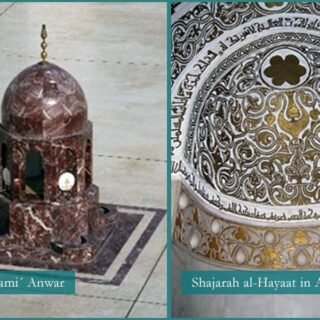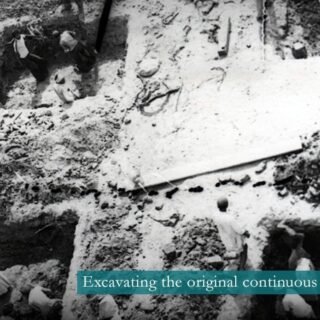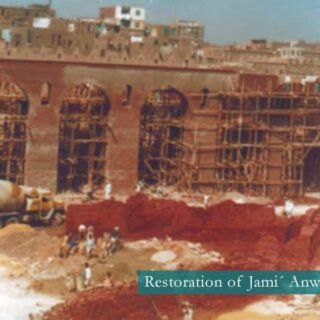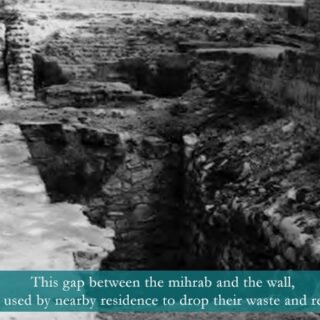He is Unto I
In 1411 H, 27 years ago, al-Dai al-Ajal Syedna Mohammed Burhanuddin RA graced Dar es Salaam for the first ever Asharah Mubarakah on its soil. It was an Asharah Mubarakah during which Syedna Mohammed Burhanuddin RA gave another clear indication of his mansoos al-Dai al-Ajal Syedna Aali Qadr Mufaddal Saifuddin TUS by directing him to deliver the first three waaz mubarak in Mumbai when he was taken ill.
Seeing the video recording of Syedna Burhanuddin’s RA waaz mubarak on 8th Moharram al-Haram 1411 H in Dar es Salaam allows us to comprehend the efforts he made to uplift Mumineen on all fronts. The fruits of these efforts are apparent before us as we sit today, in and around Hakimi Masjid and bear witness to the leaps and bounds Mumineen in Dar es Salaam, Tanzania, East Africa and all over the world have made.
The word reflection means the mirror image of an object. Today, like the painters in the presence of Imam Mustansir AS, we heard Syedna Mohammed Burhanuddin RA and Syedna Aali Qadr Mufaddal Saifuddin TUS in the words of Syedna Taher Saifuddin RA. We saw Syedna Taher Saifuddin RA and Syedna Mufaddal Saifuddin TUS while doing the deedar of Syedna Burhanuddin RA, just like we see the 51st, 52nd Dai and all previous Duat Mutlaqeen RA in Syedna al-Dai al-Ajal TUS every day, in every instant.
Syedna Taher Saifuddin’s RA words made it clear that the exhortation to noh and aweel is nothing new, even if the remarkable transformation we have witnessed over the months seems revolutionary. The prayers for prosperity, health and staying true to one’s faith as well as the narration of Imam Husain’s shahaadat AS by Syedna Taher Saifuddin RA is no different from the words, sentences, grief and lament that we see and hear today from his namesake, Syedna Mufaddal Saifuddin TUS, more than half a century later. In a microcosm, so to speak, we saw the history of Dawat, and saw the reflection of every Imam and Dai, as well as the continuation of noh and aweel throughout the centuries.
Syedna Taher Saifuddin RA stated that during these auspicious days I am engrossed in ´ibaadat: the remembrance of Awliyaa’ Allah AS. During these auspicious days of Asharah Mubarakah, Syedna Burhanuddin RA remained, and today Syedna Saifuddin TUS remains engrossed in this ´ibaadat by narrating the preeminence of Awliyaa’ Allah and the calamities that befell them. During this waaz mubarak, Syedna Burhauddin RA narrated numerous instances which established beyond doubt the preeminence of Maulana Ali AS. He explained that were it not for Amirul Mumineen AS the universe would not have been created. It was he who came to the aid of Anbiyaa’ Kiraam AS. It was also he who explained the meanings of the Quran. Syedna Burhanuddin RA gave an example of the verse in which Rasulullah SA was asked to question all previous messengers regarding the directive to not worship any deity but Allah. A person asked him when was Rasulullah AS able to put this question to all Anbiyaa’ since they were all before his time. Amirul Mumineen AS replied that after Rasulullah SA led all Anbiyaa’ Kiraam in namaaz on the night of Israa’, he turned towards them and asked this question.
Syedna Mohammed Burhanuddin RA explained that Amirul Mumineen AS is the Kauthar that was bestowed to Rasulullah SA. A Kauthar whose grace encompasses all, for even when Ibn Muljim was apprehended, Maulana Ali AS, despite the severity of his illness, directed that he be given milk and honey, and for him to be properly fed.
Four Rivers
Through their bayaans, compilations and compositions Awliyaa’ Kiraam AS bestow upon us the blessings of the four rivers of jannat. These rivers convene in Hawd Kauthar, hence it is comprised of all four rivers. It is from this hawd that the faithful will drink in the Hereafter while the disbelievers will remain parched. In the context of quenching the soul’s thirst, these rivers are analogous to rivers of knowledge.
The first type of river, as mentioned in the Holy Quran, is that of water, water that remains forever fresh. These rivers flow in the Rasaa’il Ikwaan al-Safaa’ (The Epistles of the Brethren of Purity) written in the early 3rd century by the 9th Fatemi Imam, Imam Ahmed al-Mastur AS. The Abbasid caliph, Mamum, had convened a conference of scholars to deliberate the need for sharia considering the advancement of sciences in his time. He was confident that the scientific community would render the sharia redundant. However, on the morning of the conference, copies of the epistles were placed in venues where the conference participants were likely to be. As they read Imam’s AS words, the participants were left with no option but to affirm that science and religion are in perfect harmony with one another, and one does not preclude the other. The Rasaail encompass the sciences, mathematics, geometry, astronomy, music amongst its contents. One remarkable chapter is on the animal kingdom and their contestation of man’s supremacy over all other living organisms. Above all, Imam AS establishes that every form of knowledge in its true form leads one to the Almighty. In this sense this water is always fresh; timeless; as relevant today as it was yesterday and at any time in the past.
The second river is of milk: milk that does not go sour. This river alludes to the esoteric works of al-Dai al-Ajal Syedna Qadi Noman RA. Syedna Burhanuddin RA explained that the children of Dawat have been nourished by this milk, that of Taaweel al-Daaim.
The third river is of khamr, wine, such that is always delectable to its drinker. It does not lead to intoxication or stupor. This river indicates the teachings of al-Dai al-Ajal Syedna Moayyad al-Shiraazi RA and includes both his prose and poetry written in the era of the 18th Imam, Imam Mustansir AS. His works include the 800 readings of Majaalis Moayyadiyah, numerous qasaaid and munaajaat.
The fourth river is that of honey; pure and full of curative properties: shifaa’. Bees have been divinely instructed to spread far and wide and seek nectar for their remarkable product. Along with honey’s unique capacity of not going bad itself, it is also able to preserve all that is placed in it. In the context of knowledge, this river is the writings of Syedna Hameed al-Deen al-Kirmaani, one of the dai’s of Imam Hakim AS. Amongst his treatises is Raahat al-Aql, one of the books taken in the six cartloads of books seized by the enemies of Dawat when they came to arrest al-Dai al-Ajal Syedna Qutbuddin al-Shaheed QR. Desperate to prove the heresy of the community, they sought to find evidence from dawat texts, but they were unable to even comprehend the texts before them, let alone find anything to twist for their purpose.
The knowledge of these four rivers flows from the dai of each era. This is seen in the diversity and all-inclusiveness of his sermons, waaz and bayaan which are timeless, unspoiled, delectable, curing of our souls’ ills and preservative of our faith. Syedna Burhanuddin RA stated that the content of these four rivers are found in the rasaail shareefah of Syedna Taher Saifuddin RA, and by that virtue the rasaail shareefah of Syedna Burhanuddin RA and Syedna Saifuddin TUS. Syedna al-Dai al-Ajal TUS has meticulously narrated the restoration and revival of Jami´ Anwar in his first risaalah shareefah, a narration that for us is Hawd Kauther for it contains the blessings of all four rivers. Thus, through each waaz mubarak of this year’s Asharah Mubarakah, Syedna al-Dai al-Ajal TUS extends towards us the eternal meanings and timeless teachings and guidance entailed in this restoration.
Dar es Salaam
Syedna Burhanuddin RA stated that East Africa holds a unique place in the history of Dawat. Blessed by the raza mubarak of Duat Mutlaqeen, Mumineen settled on its shores. Syedna Taher Saifuddin RA was the first dai mutlaq to grace East Africa, visiting in 1384 H.
Yesterday, we all witnessed the remarkable humility and reverence with which the current President of Tanzania greeted Syedna al-Dai al-Ajal TUS and expressed his gratitude to him for gracing Dar es Salaam for Asharah Mubarakah. Today, we heard how the then President of Tanzania also extended an invitation to Syedna Burhanuddin RA to conduct Asharah Mubarakah here in Tanzania. Syedna Burhanuddin RA mentioned that he had conveyed an invitation on behalf of Mumineen residing in Tanzania, and one invitation on his behalf. Syedna Burhanuddin RA praised the then president’s efforts for the nation’s betterment and prayed for his health and wellbeing, just as Syedna Saifuddin TUS did yesterday.
There was also extensive praise for the wonders of this country, its peacefulness, natural beauty and favourable location. He also appreciated the uprightness of its citizens. Reiterating Rasulullah’s SA directive that ‘Patriotism is an integral part of faith’, Syedna Burhanuddin RA urged Mumineen to be law-abiding citizens and actively contribute to the nation’s development.

